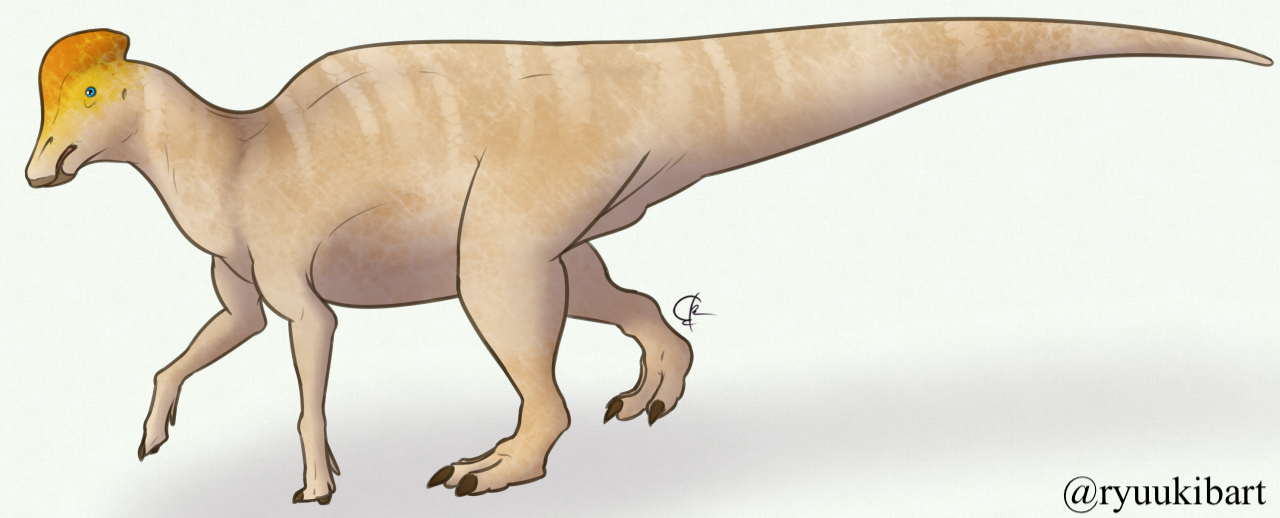Welcome to Adelolophus

Name Definition
Unknown crest
Name Given By
T. A. Gates, Z. Jinnah, C. Levitt, & M. A. Getty in 2014
Location
Wahweap Formation of the Grand Staircase-Escalante Monument in Utah
Classification
Dinosauria, Ornithischia, Ornithopoda, Hadrosauridae, Lambeosaurinae, Parasaurolophini
Size
estimated to be approximately 2 meters tall and 6 meters long, estimated to be around a ton
Temporal Range
Campanian stage of the late Cretaceous, around 78 million years ago
Ecological niche
social midsized herbivore
Species/Sub Species
A. hutchisoni
Diet
Study from other hadrosaurids suggests that Adelolophus may have also consumed low-lying plants like horsetails and conifers
Introduction
Adelolophus is a genus of lambeosaurine hadrosaurs that lived in Utah during the late Cretaceous. The genus name means in Greek “Unknown crest” referring to the fact that the presumed crest for the species is still unknown. The species name hutchisoni honors Howard Hutchison who originally discovered the specimen. The specimen (which is the only one representing the species) only consists of a damaged maxilla. Despite the fossil’s fragmentary nature, it is one of the more significant finds for paleontology. Adelolophus is the oldest genus of lambeosaurine (the tube-crested hadrosaurs) known from North America and is the only one known in the Wahweap Formation, but other hadrosaurs in the formation include Acristavus and Brachylophosaurus, though they are part of the other subfamily Saurolophinae. Phylogenetic analysis confirms that Adelolophus is more related to the Parasaurolophus-like hadrosaurs like Parasaurolophus and Charonosaurus, so Adelolophus was placed in the tribe Parasaurolophini. The Parasaurolophus crest has also been used to help restore Adelolophus’ head with its crest, though often artists depict Adelolophus with a much smaller and almost blade-shaped crest. In 1999 at Wahweap Formation, H. D. Zeller went with John Hutchison and colleagues to collect some fossils. Among these was the broken maxilla of an unnamed hadrosaur. This lambeosaurine material was the oldest known in North America. The maxilla was first reported in 2013 in a paper by Terry Gates, but was left unnamed for another year. Then, in a 2014 study, led by Terry Gates again published it into the book Hadrosaurs. The new species name for the previously unidentified lambeosaur was Adelolophus hutchisoni. Adelolophus would have lived in a tidal ecosystem with different rivers. The Upper Members of the Wahweap Formation would have experienced a more marine influence to their environment which was caused by the nearby Western Interior Seaway. This would have caused an estuarine (an estuary is a body of water that connects freshwater bodies and the sea together, often making brackish water) ecosystem with brackish water. Even with this generally wet environment, seasons of aridity would have still been present there. The many fossils that the Wahweap Formation yields was of typical Cretaceous fauna including other hadrosaurids like Acristavus and Brachylophosaurus, several species of centrosaurine ceratopsians like Diabloceratops and Machairoceratops, the apex predator Lythronax, 2 unnamed species of ankylosaurians, an unnamed pachycephalosaurid, and an unnamed saurolophine hadrosaurid. 15 genera of early mammals were also discovered in the formation which consist of multituberculates (an order of rodent-like mammals that was in the successful infraclass Allotheria), cladotherians, marsupial mammals, and small insectivores.